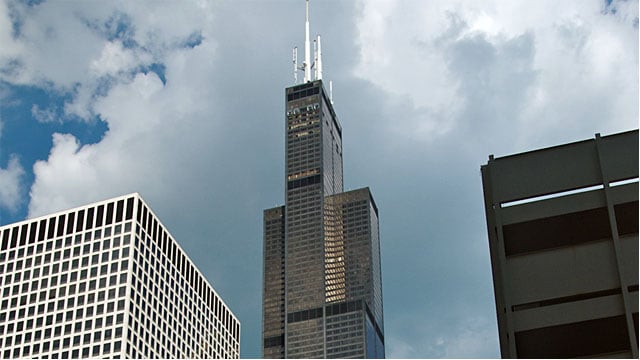

When we think of this iconic building, we think “tall.” And at 110 stories, it is certainly that. But when the Sears Tower was conceived, it was not just about height, but space: in order to consolidate employees from seven different locations around Chicago, Sears needed massive amounts of office space in one place. The building’s first 50 floors delivered a walloping 50,000 square feet each to solve that challenge.
Architect Bruce Graham and structural engineer Fazlur Khan of Skidmore, Owings & Merrill employed an innovative construction approach — based on the concept of bundled tubes — to lend stability to the tall structure. Graham famously used a pack of cigarettes to demonstrate the concept to a peer.
When it was completed in 1974, the Sears Tower was the tallest building in the world, but it has since been eclipsed in height by other buildings.
Today, you can step out on a clear-floored glass balcony on the 103rd-floor observation deck and look straight down to the street a quarter of a mile below you.
The building was renamed in 2009 for London-based Willis Group Holdings.

